Q
how much does it cost to charge a byd atto 3
In Malaysia, the cost to charge a BYD Atto 3 depends on your charging method and electricity rates. Home slow charging is the most budget-friendly option—you're looking at roughly 40 to 50 ringgit to fully top up the battery. The exact amount varies a bit based on your electricity tariff and the battery capacity, which sits at around 60.5kWh. Public fast chargers are pricier, though, usually ranging from 60 to 80 ringgit, and some operators might slap on extra service fees.
To save some cash, we'd recommend plugging in during off-peak night hours when electricity rates dip, or even exploring green energy setups like solar charging. As a pure electric SUV, the Atto 3 delivers a solid 480km range under the WLTP cycle, making it a solid pick for both daily commutes and longer road trips. Let's not forget the ongoing savings: EVs simply cost way less to run than gas guzzlers, and over time, those savings really add up. Plus, the Malaysian government's tax incentives for electric vehicles sweeten the deal even more by lowering the overall cost of ownership. So, in the long run, going with the BYD Atto 3 isn't just good for the planet—it's a smart financial move too.
Special Disclaimer: This content is published by users and does not represent the views or position of PCauto.
Related Q&A
Q
What is the lifespan of the battery in the BYD Atto 3?
The BYD Atto 3's battery lifespan typically sits around 8 to 10 years, though this can vary depending on your driving habits and charging routines. Under the hood (or rather, under the floor), it's packing BYD's in-house developed Blade Battery, a lithium iron phosphate (LFP) unit that's big on safety and long-term durability. Official specs tell us this battery can handle around 3,000 full charge-discharge cycles. Doing some quick math on daily usage, that translates to over 300,000 kilometers driven while still retaining more than 80% of its original capacity.
Now, for our friends in Malaysia, that hot climate might nudge the battery life a tiny bit, but the Blade Battery's thermal management system does a solid job of keeping temperatures in check. A pro tip? Try to avoid super frequent fast charging and leaving the battery sitting at 100% for ages – that'll help stretch its life even further. Let's not forget, battery longevity also ties in closely with regular maintenance. Keeping an eye on the battery's health status and sticking to the manufacturer's service recommendations are key moves.
Here's a reassuring thought: these days, the actual usable life of most EV batteries often outlasts how long owners typically keep their cars. Plus, BYD backs the Atto 3 with an impressive 8-year or 150,000-kilometer battery warranty, which covers the bulk of your ownership journey. So, Malaysian drivers, there's really no need to lose sleep over battery life with this one.
Q
Can you put roof racks on a BYD Atto 3?
Yep, the BYD Atto 3 can definitely handle a roof rack, but you’ll want to stick with accessories specifically designed for this model to make sure everything fits right and stays safe. The Atto 3’s roof comes with pre-installed mounting points, which makes adding crossbars or a roof box a breeze—perfect for hauling bikes, surfboards, or extra luggage when you need the space.
In Malaysia, you can find both genuine BYD roof rack setups and third-party options that are certified, either at auto accessory shops or BYD’s authorized dealers. My tip? Go for products that have passed safety tests. You don’t want to risk damaging the roof structure by skimping here.
When you’re installing, keep an eye on the weight limits. The Atto 3’s dynamic roof load (that’s when you’re driving) is usually around 50-75kg, and the static load (when parked) is higher, but check your owner’s manual for the exact numbers—don’t guess on that.
Also, remember that a roof rack adds wind resistance, which can hit your EV’s range, especially at higher speeds. It’s probably best for shorter trips. And make a habit of checking the bolts now and then to keep everything tight.
For folks in Malaysia, our hot and humid weather can speed up rust on metal parts, so either pick roof racks made with rust-resistant materials or give them regular maintenance to keep them going longer. If you’re loading stuff often, you might also think about a rear-mounted bike rack or a tow hitch as alternatives—just make sure whatever you choose plays by local traffic rules.
Q
How many kilometers is Atto 3 full charge?
The BYD Atto 3, as a pure electric SUV, offers an official range of approximately 480 kilometers on a full charge under the WLTP standard. Now, real-world driving range can vary a bit depending on things like your driving style, road conditions, and how much you use the air conditioning – totally normal, right? But overall, it's more than capable of handling Malaysian drivers' daily commutes and those quick weekend getaways.
Given Malaysia's warm weather, a quick tip: using the AC sensibly and keeping a steady driving pace can really help optimize that range. And let's talk about peace of mind – the Atto 3's Blade Battery technology is a standout here, offering solid safety and stability, which is perfect for our local climate with its frequent rain and high temperatures.
For EV owners, staying on top of battery health checks and planning routes with public charging stations in mind will definitely make your driving experience smoother. Plus, the Atto 3 supports fast charging – you can go from 30% to 80% in around 30 minutes, which means way less time twiddling your thumbs at the charger.
The Malaysian government is really pushing for EV adoption these days, with more charging infrastructure popping up and some nice tax incentives. So, picking a high-value option like the Atto 3 isn't just about enjoying emission-free driving; it's also a smart move to align with the country's growing focus on greener mobility.
Q
Can BYD ATTO 3 self drive?
The BYD ATTO 3, as a pure electric SUV, doesn't come with full self-driving capabilities just yet, but it does pack a pretty advanced Advanced Driver Assistance System (ADAS). This setup delivers a taste of automated driving with features like Adaptive Cruise Control (ACC), Lane Keeping Assist (LKA), and Automatic Emergency Braking (AEB). These tech tools are real lifesavers on highways or in stop-and-go traffic, taking some of the strain off the driver – though it’s crucial to stay alert and ready to take over at any moment.
For Malaysian drivers, the ATTO 3’s smart features should be more than enough for daily commuting needs. That’s especially true in busy urban spots like Kuala Lumpur, where these driver-assist functions can really step up both safety and convenience behind the wheel. It’s worth keeping in mind, though, that while self-driving tech is evolving fast, most cars on the market right now are still at Level 2 assisted driving. Full autonomy (L4 or L5) is still not mainstream. So, while it’s great to enjoy the perks of this tech, it’s just as important to understand the limits of what these systems can do to keep everyone safe on the road.
Beyond its tech, the BYD ATTO 3 also stands out in Malaysia with its solid driving range and local service support. All these factors combined make it a strong contender for anyone looking to jump into the electric vehicle game.
Q
How much does it cost to charge a BYD ATTO 3 at home?
In Malaysia, the cost to charge your BYD ATTO 3 at home really comes down to your electricity rate and the battery size. The ATTO 3 packs around a 60.48kWh battery, right? So if you’re on TNB’s residential tariff, averaging about RM0.30 per kWh, a full charge would set you back roughly RM18.14. Of course, the actual cost might wiggle a bit depending on the time of day you charge or those tiered pricing structures they have.
One thing to note: home charging usually means plugging into an AC slow charger (around 7kW), which takes about 8-10 hours to top up the battery. That’s why most folks find it easiest to charge overnight—perfect for taking advantage of off-peak rates if you can get ’em. Compare that to public DC fast chargers, which can blast you up to 80% in 40 minutes, but man, those things cost 2-3 times more than charging at home. Ouch.
Here’s a pro tip for Malaysian owners: hit up TNB about their EV-specific tariff plans, like the EV Tariff. These often hook you up with sweet discounts for nighttime charging, which can knock down your running costs even more. Now, installing a home charger isn’t free—you’re looking at an initial outlay of around RM2,000 to RM4,000 for installation. But here’s the kicker: over time, you’ll save roughly 60% on energy costs compared to a gas-powered car. Plus, the Malaysian government is throwing in incentives like tax breaks for EV charging gear, so it’s worth chatting with a certified installer to see what deals you can score. Trust me, the long-term savings make that upfront cost totally worth it.
Q
Is the BYD ATTO 3 fully electric or hybrid?
The BYD ATTO 3 is a fully electric SUV with no hybrid option in sight. It's packed with BYD's in-house developed Blade Battery tech, offering around 480km of NEDC range – though your actual mileage might vary depending on how you drive. This makes it a solid fit for Malaysian drivers needing a reliable runabout for daily commutes or quick weekend getaways.
Being a pure EV, the ATTO 3 taps into Malaysia's government incentives for electric vehicles, which means sweet savings on import duties and road tax. Plus, its zero-emission credentials align perfectly with the growing eco-conscious vibe. BYD's no newcomer to the EV game; they're a global leader, and their electric vehicle tech has been road-tested and proven. The ATTO 3 shines when it comes to safety, smart driving assists, and in-car tech – think that cool rotating infotainment screen and the DiLink smart connectivity system.
And let's not forget Malaysia's charging infrastructure is slowly but surely getting better, making life with a pure EV more hassle-free. All in all, the BYD ATTO 3 strikes a nice balance between performance, green credentials, and everyday practicality.
Q
What is the top speed of the byd atto 3?
The BYD Atto 3, as an all-electric SUV, tops out at 160 km/h – more than enough oomph for zipping around Malaysian cities or cruising down the highway. And let's not forget, electric motors are total beasts when it comes to off-the-line acceleration, which the Atto 3 definitely delivers on. Under the hood (or rather, under the floor), you've got a motor cranking out 204 horsepower and 310 Nm of torque. Pair that with BYD's e-Platform 3.0 tech, and you're looking at a smooth, refined drive that's also surprisingly efficient with energy.
Now, Malaysia's tropical climate can be tough on batteries, but the Atto 3's battery management system does a solid job of keeping things stable and performing at their best. That WLTP-rated range of around 400 km? Perfectly suitable for most folks' daily grind around here. On top of that, electric vehicles mean lower maintenance bills and a greener footprint – two big ticks, especially with the Malaysian government really pushing those green mobility initiatives lately.
If you're thinking about making the switch to electric, top speed is just one piece of the puzzle. Charging convenience, how far you can go on a single charge, and reliable after-sales support are huge factors too. And honestly? The Atto 3 checks those boxes pretty well, making it a compelling option in the EV space.
Q
Can I charge my byd atto 3 to 100%?
Can the BYD Atto 3 be charged to 100%? Absolutely, this electric vehicle supports a full charge. However, to maximize battery lifespan, it's best to keep the charge level between 20% and 80% for daily use, only topping it up to 100% when you need maximum range for a long road trip. The Atto 3 is equipped with a lithium iron phosphate (LFP) battery, which offers better thermal stability and a longer cycle life compared to traditional ternary lithium batteries, so occasional full charges won't have much impact on the battery. For Malaysian users, the hot climate can affect battery performance a bit. It's advisable to avoid prolonged charging in high-temperature environments; instead, try to charge in shaded areas or during the cooler night hours to keep the battery in good shape. Additionally, regular use of slow charging helps balance the cell voltages in the battery pack, further enhancing battery efficiency. If you plan to leave the vehicle parked for an extended period, it's recommended to keep the charge around 50%, and when you start using it again, perform a full charge-discharge cycle to calibrate the battery management system.
Q
Does the ByD Atto 3 come with a charging cable?
The BYD Atto 3 typically comes with a standard home charging cable here in Malaysia, letting owners juice up directly from regular household power outlets. But it's worth noting that exact specs might vary a bit depending on the dealer or any ongoing promotions, so it’s always a good idea to check with your local BYD showroom before finalizing your purchase. For Malaysian drivers, that home charging cable is a solid daily companion. Yeah, the charging speed is on the slower side, but it’s super cost-effective—perfect for overnight top-ups when you’re not in a rush. If you need a quicker boost, though, the Atto 3 does support DC fast charging. You’ll just need to hit up public charging stations, which are popping up more and more these days—think shopping malls, petrol stations, and the like across the country. On the support front, BYD’s after-sales network in Malaysia is steadily growing too. Their official app is handy for locating nearby charging spots and service centers, so you can drive with peace of mind. For anyone new to EVs, getting clued up on the different charging options and where the infrastructure is located is key. That way, you can plan your trips better and really make the most of the convenience and eco-friendly perks that come with driving an electric vehicle.
Q
Can you fit 3 car seats in BYD Atto 3?
The BYD Atto 3, as a compact SUV, offers a rear seat width of approximately 1,350 millimeters. On paper, this suggests the possibility of fitting three child seats across, but the real-world feasibility hinges heavily on the specific size and design of the seats you're working with. If you opt for narrower ISOFIX child safety seats – think around 44 centimeters wide each – squeezing three side by side might just work, though it's likely to feel pretty tight. Buckling up could become a bit of a hassle too, with limited room to maneuver the seatbelts.
My advice? Don't just take the specs at face value. Parents should definitely measure the actual space in the car and, better yet, bring their child seats along to the dealership for a test fit. This way, you can check both how securely they latch in and whether there's enough comfort for the little ones.
And hey, let's not forget the legal side of things, especially here in Malaysia. The law is clear: kids must be in approved safety seats. So, when you're shopping, make sure whatever seat you pick carries the UN R44 or R129 certification, and double-check that it's installed correctly every time.
If you're regularly shuttling around multiple children, it might be worth considering a seven-seater alternative. Maybe look at the Atto 3's siblings within the BYD lineup or explore other brands' MPVs. These often provide more flexible interior layouts and can make installing multiple child seats a whole lot easier.
Popular Cars
Model Year
Car Compare
Car Photo
Latest Q&A
Q
How much does it cost to buy a 2024 Tesla Model 3?
The 2024 Tesla Model 3 starts at around RM 175,000, but the final price depends on your chosen configuration and add-ons. Opt for the Long Range or Performance version, and you’re looking at a higher tag.
As Tesla’s entry-level model, it packs cutting-edge EV tech, including 500+ km of range on a single charge and standard Autopilot for both daily commutes and road trips. Just keep in mind extra costs like insurance, registration, and potential home charger installation.
Tesla’s Supercharger network is expanding locally, with solid coverage in major cities, making charging hassle-free. Maintenance costs? Typically lower than gas cars—no oil changes, fewer moving parts—so long-term savings add up.
If you’re after more thrills, the Performance variant hits 0-100 km/h in roughly 3 seconds. Plus, government EV tax perks help soften the upfront cost.
Q
How reliable is the 2024 Model 3?
The 2024 Model 3 delivers solid reliability, thanks to Tesla’s continuous software updates and hardware refinements. Key areas like the battery management system and Autopilot have seen multiple optimizations, leading to a noticeable drop in failure rates.
This model features a stiffer body structure and an improved suspension setup, offering a smoother ride. Upgraded interior materials also help reduce cabin rattles—a common gripe with earlier builds.
EV maintenance costs remain low (no oil changes, etc.), though it’s wise to periodically check battery health and charging components for long-term performance. For shoppers eyeing EVs, charging infrastructure and home charging options matter—thankfully, public chargers are expanding fast, making daily use more convenient.
If you frequently road-trip, planning charging stops ahead helps. While the range easily handles daily drives, a little route prep goes a long way in maximizing the experience.
Q
What is the battery range of the Tesla Model 3 2025?
The battery range of Tesla Model 3 2025 is expected to be optimized based on existing models, and specific data needs to be released officially. However, referring to the EPA range of the 2024 rear wheel drive version, which is about 438 kilometers, and the high-performance version, which is about 513 kilometers, the 2025 model may further improve, especially in terms of battery technology or energy efficiency management. For electric vehicles, the range is greatly affected by driving habits, road conditions, and climate. Air conditioning may slightly reduce the range in hot weather, but the battery thermal management system can usually maintain stable performance. In terms of charging, Model 3 supports super fast charging, which can replenish about 250 kilometers of range in about 15 minutes, while home charging stations require 6-8 hours to fully charge. Daily commuting or long-distance travel are practical enough, it is recommended to follow Tesla's official website or local showroom for the latest information.
Q
Is the 2024 Model 3 worth the price?
The 2024 Model 3 strikes an impressive balance between price and performance. Its upgraded range, more refined interior, and enhanced autonomous driving features genuinely boost its competitiveness—especially for tech-savvy, eco-conscious buyers.
Tesla optimized the battery efficiency this time around, making it suitable for both daily commutes and longer trips, while the handling stays true to the brand’s signature responsiveness. If your budget allows and you’re open to EVs, this one’s worth considering—though a test drive is wise to see if it matches your driving style.
That said, local charging access matters. While public chargers are becoming more common, home installation costs should factor into your budget. Alternatives in this price range exist, so cross-shop specs and service policies (like warranty coverage or charging network support) to make a well-rounded decision.
Q
How many miles does a 2024 Tesla Model 3 get?
The 2024 Tesla Model 3 offers varying range figures depending on configuration. The rear-wheel-drive (RWD) version delivers an EPA-estimated 272 miles (approx. 438 km), while the all-wheel-drive Long Range model pushes that to around 341 miles (roughly 549 km). Real-world range may vary slightly based on driving style, road conditions, and climate.
As a pure EV, the Model 3 achieves this efficiency thanks to its advanced battery management system and lightweight design. It also supports fast charging—at a Tesla Supercharger, you can add up to 200 km of range in about 15 minutes. Whether for daily commutes or longer trips, that’s more than enough for most drivers, especially with charging infrastructure becoming more widespread.
If you need to maximize range, tweaking your driving mode or using the car’s built-in energy optimization features can help squeeze out even more miles.
View MoreRelated News

Leapmotor B10 VS BYD Atto 3, a showdown between two automakers adept at price wars
WilliamNov 27, 2025

iCaur 03 vs. BYD Atto 3, how will iCaur 03 challenge the globally best-selling Atto 3?
Kevin WongOct 16, 2025
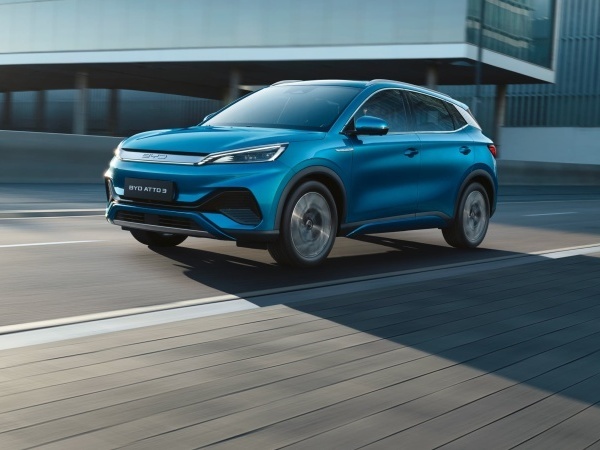
BYD ATTO 3 Interior Malaysia: Where Simplicity Meets Smart Technology
LienJul 22, 2025
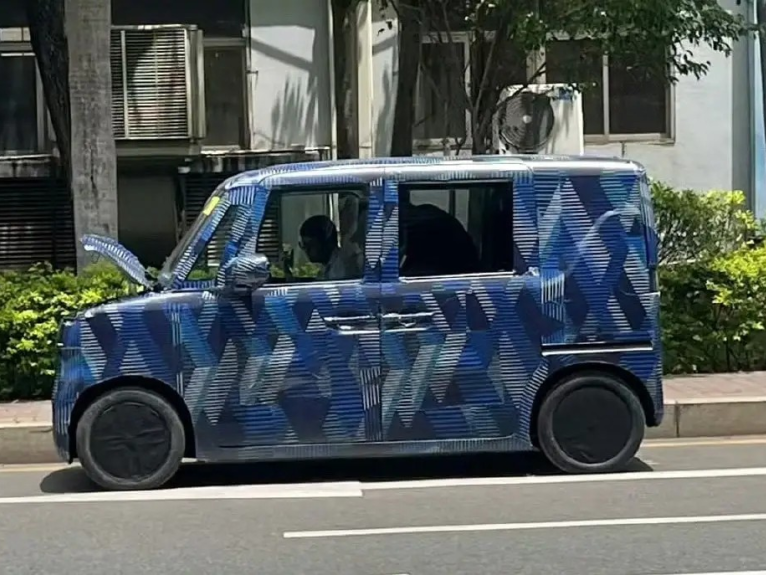
BYD has Launched a K-Car Targeting the Japanese Market, Aiming to Challenge Local Automotive Brands
AshleyMay 20, 2025
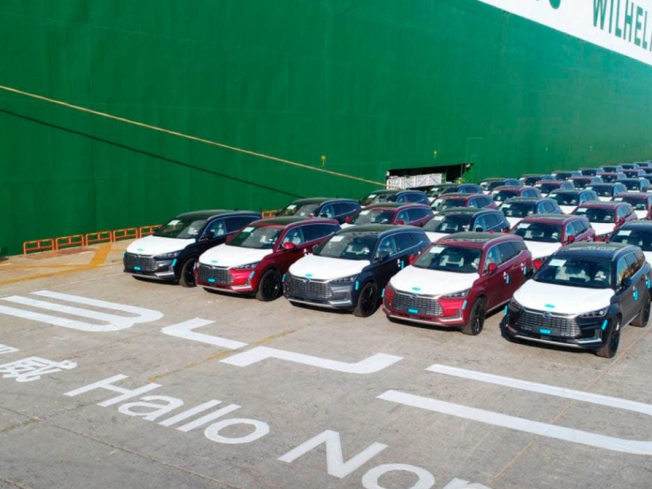
BYD Exports 214K Vehicles in Q1, Top Sales in 7 Markets
RobertApr 30, 2025
View More






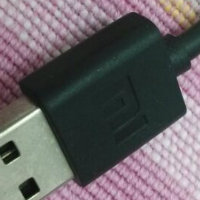





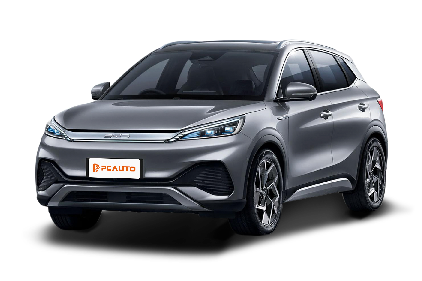





Pros
Cons